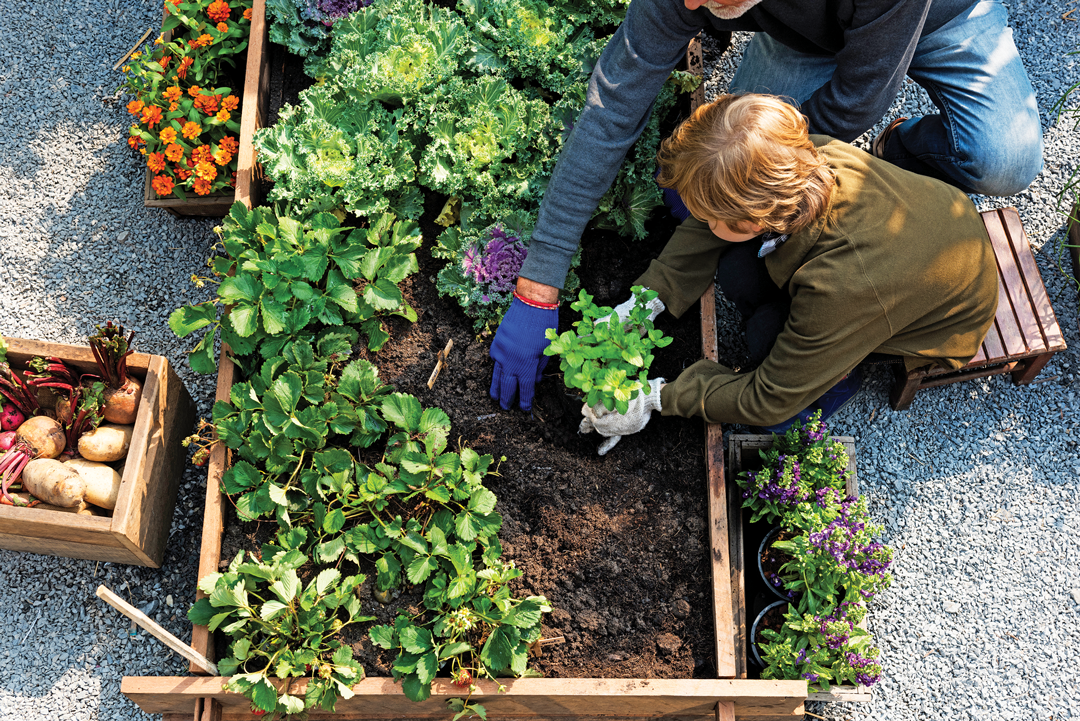Seasonal Gardening Tips: What to Plant and When for Ideal Results
Seasonal Gardening Tips: What to Plant and When for Ideal Results
Blog Article
The Comprehensive Guide to Horticulture: Discover the Benefits of Different Designs and Techniques
Horticulture incorporates a diverse variety of designs and strategies, each offering unique advantages tailored to private choices and environmental contexts. From the organized beauty of formal yards to the organic appeal of permaculture, recognizing these variations is crucial for growing an area that not only flourishes however additionally shows individual worths and looks. Sustainable practices play a crucial role in enhancing neighborhood ecosystems and guaranteeing lasting success. As we explore these various styles, it comes to be evident that the options made can significantly affect both the yard's health and its payment to the surrounding environment.
Understanding Gardening Fundamentals
Comprehending the essentials of gardening is crucial for growing a thriving and lasting garden. A successful horticulture undertaking starts with a strong foundation of knowledge regarding dirt, plant choice, and climate factors to consider.
Picking the right plants is just as vital. Recognizing their certain requirements-- such as sunshine, water, and spacing-- guarantees compatibility with the neighborhood environment and dirt conditions. This selection process must also think about the growth habits and lifecycle of plants, enabling a balanced and visually pleasing yard.
In addition, efficient watering practices are crucial. Over-watering and under-watering can both bring about plant anxiety and illness. Executing a routine based on seasonal modifications and plant demands can improve water performance.
Popular Horticulture Styles
What specifies the significance of prominent gardening designs? These styles envelop diverse aesthetic principles, functional demands, and ecological factors to consider, eventually showing the gardener's personal vision. Among one of the most prominent styles is the cottage garden, defined by its informal format and a vibrant selection of flowers and vegetables. This technique highlights a harmonious mix of color and structure, producing a welcoming atmosphere.
On the other hand, the formal yard symbolizes symmetry and order, frequently featuring geometric patterns and diligently trimmed hedges. This design communicates sophistication and sophistication, with thoroughly picked plants that strengthen an organized aesthetic.
The Japanese garden supplies a calm and reflective experience, making use of natural environments like water, rocks, and plants to produce a relaxing atmosphere. It focuses on simplicity and balance, urging contemplation.
Additionally, xeriscaping has actually gained popularity, especially in arid areas (Gardening). It prioritizes drought-resistant plants and effective water usage, promoting sustainability while improving landscape elegance
Benefits of Container Gardening
Container horticulture provides a wide range of advantages that make it an attractive option for both beginner and experienced garden enthusiasts alike. Among the primary advantages is adaptability; containers can be placed in various areas, enabling gardeners to enhance sunshine direct exposure and produce aesthetically attractive setups. This versatility makes it possible to yard in rooms where standard in-ground gardening may not be viable, such as balconies, outdoor patios, or urban environments.
In addition, container horticulture supplies far better control over dirt problems. Gardeners can customize the dirt mix to match particular plants, guaranteeing optimum drainage and nutrient schedule. This is specifically useful for individuals residing in locations with bad or contaminated soil.
One more substantial advantage is the minimized risk of pests and conditions. Container plants can be checked extra quickly, and any concerns can be dealt with without delay. Additionally, this approach can lessen the spread of intrusive varieties.
Sustainable Gardening Practices
Lasting horticulture practices are essential for promoting environmental health and wellness and enhancing biodiversity in our ecosystems. These practices prioritize eco-friendly balance, resource preservation, and using organic methods to lessen negative ecological effects. By utilizing strategies such as composting, gardeners can reduce waste while enriching soil health, thereby promoting a prospering yard ecosystem.
Water conservation is one more essential element of sustainable gardening. Techniques such as rainwater harvesting, look at this web-site drip watering, and making use of drought-resistant plants can considerably lower water use while making certain that plants get adequate dampness. Integrating native plant types into garden layouts sustains neighborhood wild animals and lowers the need for chemical fertilizers and pesticides, which can be harmful to the atmosphere.

Inevitably, sustainable horticulture methods not only add to much healthier yards however additionally advertise an even more resistant setting, providing long-lasting benefits to both the gardener and the surrounding area.
Tips for Effective Gardening
To grow a thriving yard, gardeners ought to prioritize cautious preparation and thoughtful execution of their horticulture approaches. Begin by examining the neighborhood environment and dirt conditions, as these aspects considerably affect plant selection and growth. Choose plants that are appropriate to your atmosphere, taking Check This Out into consideration native types that will certainly prosper with marginal intervention.
Carrying out a well-structured format is crucial (Gardening). Make use of friend growing strategies to advertise biodiversity and all-natural bug control, while guaranteeing each plant has appropriate space for development. This not only boosts aesthetics but also boosts general plant health and wellness
Routine upkeep is key to a successful yard. Develop a regular schedule for watering, weeding, and feeding. Mulching can assist maintain wetness and reduce weeds, while additionally including raw material to the dirt.
Don't underestimate the significance of monitoring. On a regular basis monitoring plant health and wellness and development will allow for timely treatments. Be open to learning and adapting; gardening is a constant procedure that profits from experience and trial and error. By focusing on cautious planning, implementation, and recurring upkeep, gardeners can attain a dynamic and effective garden that thrives throughout the seasons.
Conclusion
:max_bytes(150000):strip_icc()/close-up-of-a-women-watering-vegetables-in-a-raised-bed-1407277094-c63fd1ff0a21406ebf17c51ac6c6f2d1.jpg)

In summary, the exploration of diverse horticulture styles and techniques discloses their multifaceted benefits, contributing to both aesthetic appeal and environmental wellness. Container gardening provides flexibility and access, while lasting practices enhance ecological stewardship. By visit this web-site incorporating different methods and methodologies, gardeners can maximize their efforts, promote biodiversity, and develop practical exterior spaces. Ultimately, this detailed guide serves as a useful source for growing effective gardening experiences, promoting a much deeper link with nature and the surrounding environment.
Report this page